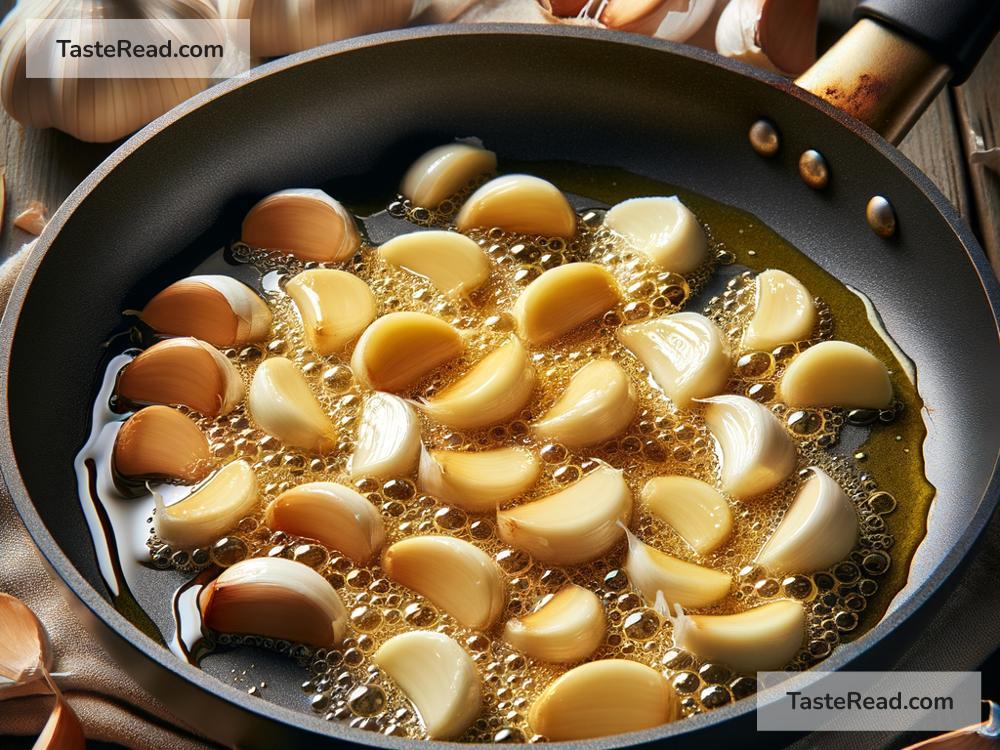How Cooking Impacts the Pungency of Garlic
Garlic is a staple ingredient in kitchens around the world. Whether you’re cooking spaghetti sauce, stir-frying veggies, or roasting potatoes, garlic often plays a starring role in adding flavor to dishes. But have you ever noticed how garlic can taste different depending on how you cook it? Sometimes, it’s strong and pungent, and other times, it’s mild and sweet. This all comes down to how cooking impacts the chemical composition of garlic.
In this article, we’ll dive into the science behind garlic’s pungency and explore how it changes with various cooking methods. Don’t worry, we’re keeping this simple—no chemistry degree required! By the end, you’ll understand what happens to garlic during cooking and how to perfect its flavor to suit your dish.
Why Is Garlic Pungent?
Before we talk about cooking, let’s first understand why garlic is pungent in the first place. Raw garlic has a strong, sharp flavor because of a chemical reaction that happens when you cut, crush, or chop it. Garlic contains a compound called alliin, which is harmless on its own. However, when you damage garlic by cutting it, an enzyme called alliinase gets activated. This enzyme reacts with alliin to form allicin, which is responsible for garlic’s signature strong aroma and pungent taste.
Allicin is unstable and highly reactive, which is why raw garlic has such a bold punch. While some people love the intense flavor of uncooked garlic, others find it too overpowering. That’s where cooking comes in—heat changes everything.
How Cooking Changes Garlic’s Flavor
Cooking garlic doesn’t just make it softer—it transforms its chemistry and flavor entirely. Heat impacts allicin in two major ways:
- It reduces pungency: When garlic is heated, allicin breaks down quickly. Since allicin is what makes garlic pungent, cooked garlic usually tastes much milder than raw garlic.
- It creates new flavors: As allicin disappears, garlic develops a sweeter, nutty flavor during cooking. This happens due to Maillard reactions, which are chemical transformations that occur between proteins and sugars under high heat.
Let’s look at how different cooking methods impact garlic’s pungency and flavor.
Cooking Methods and Their Effect
-
Raw Garlic
If you keep garlic raw, its pungency is at its peak. The allicin remains intact, giving the garlic a sharp taste and powerful aroma. Raw garlic is often used in salad dressings, dips like tzatziki, or sauces like chimichurri to add a bold kick. However, because the flavor is so strong, it’s best to use raw garlic in small amounts. -
Sautéing
When you sauté garlic over medium heat, allicin begins to break down, reducing its harsh pungency. The garlic develops a mellow, slightly sweet flavor while retaining some of its boldness. This is why sautéed garlic works beautifully in stir-fries, pasta, and sauces—it adds flavor without overpowering the dish. -
Roasting
Roasting garlic at a high temperature (typically in the oven) brings out its sweetest side. As the garlic cooks, allicin disappears entirely, and the cloves caramelize. Roasted garlic tastes rich, nutty, and buttery with no sharpness at all. You can spread it on bread, add it to mashed potatoes, or blend it into soups for an ultra-smooth flavor. -
Boiling or Simmering
When garlic is boiled or simmered, such as in soups or stews, the heat dissipates its pungency over time. Even though the sharpness fades, boiled garlic doesn’t develop the sweetness you get from roasting or sautéing. Instead, it becomes mild and soft with a slightly savory flavor. -
Burning
Beware of cooking garlic over high heat for too long—it can burn easily within seconds! Burnt garlic tastes bitter and unpleasant. If you sauté garlic, make sure it stays golden and fragrant rather than turning brown or black. Once it’s burned, there’s no saving it, so it’s better to start over.
How to Control Garlic’s Pungency
Knowing how cooking affects garlic can help you tailor its flavor to your dish. Here are a few tips:
– For a strong taste, use raw garlic or barely sautéed garlic.
– For a mild taste, cook garlic longer at low to medium heat, or roast it.
– For sweetness, roast garlic until golden and caramelized.
– Add it last or first: When you sauté garlic, adding it at the beginning of cooking makes the flavor more subtle, while adding it toward the end keeps its flavor more intense.
The Bottom Line
Cooking dramatically changes the pungency of garlic. Heat reduces its sharpness by breaking down allicin and creates new flavors ranging from mild and savory to sweet and nutty. When deciding how to cook garlic, think about the flavor profile you want for your dish. Experiment with raw, sautéed, boiled, or roasted garlic to discover how each method impacts your meal’s taste.
Garlic is a versatile ingredient, and understanding how to harness its flavor through cooking can take your dishes to the next level. So, the next time you reach for a clove of garlic, remember: how you cook it makes all the difference!


